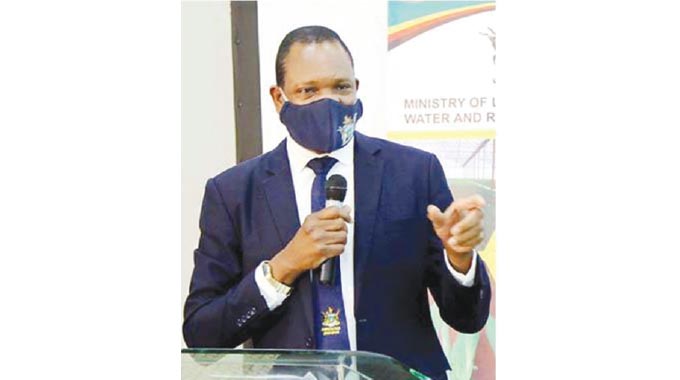the herald
Blessings Chidakwa-Herald Reporter
At least 2.7 million communal households will benefit from 35,000 two-wheel tractors replacing the traditional hoe and plow system as part of a transformative government initiative aimed at changing lives and livelihoods across the country .
In addition, 5,000 field schools and 4,000 animal husbandry and veterinary schools for agricultural development have been established across the country as the country implements sweeping changes aimed at transforming the agricultural sector into an industry of 8 .2 billion by 2025.
The package of measures, announced yesterday by the Minister of Lands, Agriculture, Fisheries, Water and Rural Development, Anxious Masuka, in Harare, will also see 400,000 peri-urban farmers benefit from the presidential input scheme as part of a development that leaves no one and no one behind. place behind that defended by President Mnangagwa.
The measures are also part of the National Development Strategy 1 (SND1) which places particular emphasis on the mechanization and modernization of agriculture.
The transition to two-wheeled tractors is expected to benefit millions of people across the country and prove useful, especially as some farmers have lost their livestock to disease.
In addition to targeting small-scale farmers, commercial farmers will also benefit, as 3,000 tractors are expected in the country, as part of measures to ensure food security, save foreign exchange from grain imports and reposition the Zimbabwe as a major supplier of agricultural products in the country. world.
Addressing a press conference at his office yesterday, Dr Masuka said the tractors came from Belarus and the John Deere factory run by an American company.
“We have 2.7 million households in the country that still use the plow and hoe. A recent survey by Zimvac (Zimbabwe Vulnerability Assessment Committee) showed that half of households do not own livestock and find it difficult to till the soil, hope Pfumvudza/Intwasa can help them. However, the mechanization of Pfumvudza/Intwasa itself is essential, and we are importing 600 units of two-wheeled tractors which we will donate to service providers in the villages. We already have 68 who have arrived in the country.
“In this space, we need at least 35,000 units of two-wheel tractors to be able to mechanize common areas to increase this productivity,” he said.
Dr. Masuka said some components of the tractors will be manufactured locally while the import of other tractors for resettled and large-scale farmers is underway.
“In the past we imported parts like disc harrows, we need to localize the production of these attachments. We are accelerating the mechanization program,” he said.
For large farmers, the government will bring in more than 3,000 tractors by August this year.
“We have already brought over 1,000 tractors to the Belarus and John Deere facilities. I expect 1,337 tractors to arrive in the next two months. More than 80 of these tractors are already in the country and will be distributed through financial institutions.
Dr Masuka said the government has moved from Command Agriculture to the National Enhanced Agricultural Productivity Scheme where instead of giving direct inputs to farmers they will now create discipline among farmers so that for the sake of sustainability they spend by financial institutions.
He said the financial aid would come through government-backed programs at banks such as CBZ and AFC, with farmers having access to the equipment they pay for over a three-year period and with a deduction 15% on the deposit made at a point of sale with the Grain Marketing Board.
“From this year, 400,000 peri-urban farmers will also benefit from the Presidential Inputs Scheme which is a productive social scheme where they do not pay.
“This contract between the president and households will produce enough food to feed farmers and their families with the surplus funneled to the GMB,” he said.
Dr Masuka said that of the 5,000 farmer field schools established, the program targets agricultural production, with every Agritex officer expected to lead the practice.
“In the past, we had Agritex agents as extension and trainers, now we have changed our whole extension system from Agricultural Extension 2.0 for extension and training to Agricultural Education for Development in order to include entrepreneurship, innovation, research and development.
“The Agritex worker will run a farmer field school and teach best management practices before farmers go out and do the same,” he said.
Dr Masuka said for livestock they will have 4,000 veterinary and livestock development field schools.
“There will be one (school) in each dipping tank. We no longer have these places just for disease control, but also a place where best practices are taught, including applying tick grease and making household food,” he said.











More Stories
Sri Lanka’s post-harvest losses in agricultural sector exceed Rs. 55 billion – – The island
SAU Vice-Chancellor emphasizes effective research in agricultural sector
Agriculture sector threatened by climate change, expert says – Pakistan